Everest View Trek
Step back in time and experience the allure of the Everest View Trek, a journey that promises unparalleled views and culture in the heart of the Himalayas.
As travelers embark on this expedition, they are greeted by the towering peaks and the warm hospitality of the Sherpa community.
But what challenges lie ahead on this path less traveled?
The Everest View Trek offers a glimpse into a world where adventure meets tradition, where every step unveils a new story waiting to be told.
Key Points
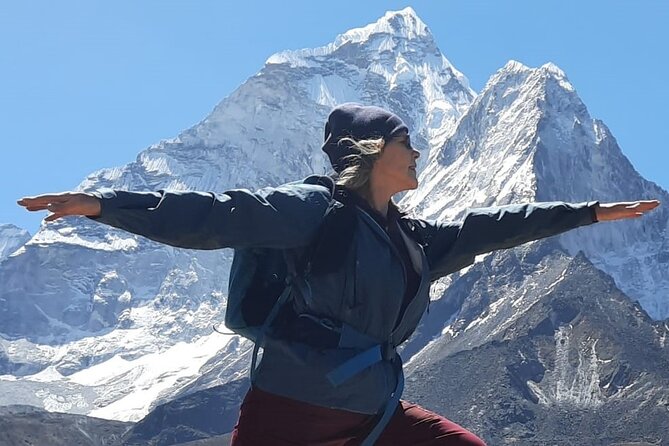
- Immerse in iconic landscapes and local culture
- Enjoy stable weather for clear panoramic views
- Engage in cultural experiences and wildlife spotting
- Ensure safety with proper gear and acclimatization
Overview of Everest View Trek
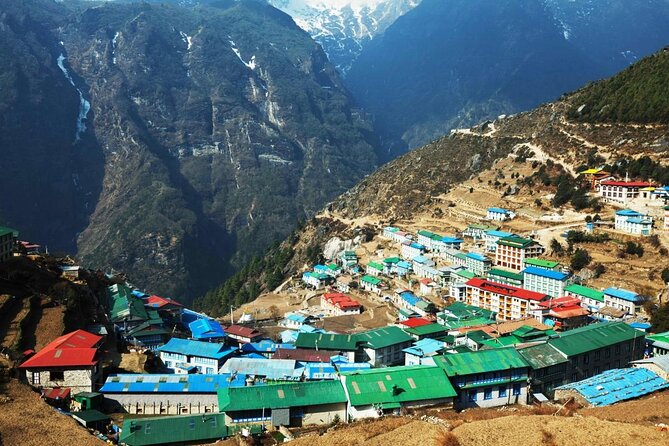
Nestled in the breathtaking Himalayas, the Everest View Trek offers adventurers an awe-inspiring journey through the iconic landscapes of the world’s tallest mountain. This trek provides numerous scenic viewpoints where trekkers can marvel at the stunning beauty of the Himalayan range, including up-close views of Mount Everest.
Along the way, hikers have the opportunity to enjoy the rich local culture, interacting with Sherpa communities and gaining insights into their traditional way of life. Wildlife spotting is another highlight of this trek, with chances to encounter Himalayan wildlife such as snow leopards and Himalayan thars.
On top of that, photographers will find endless opportunities to capture the mesmerizing beauty of the Himalayan scenery, making this trek a paradise for photography enthusiasts.
Best Time to Visit

For optimal trekking conditions and breathtaking views, the best time to visit the Everest View Trek is typically during the spring or autumn seasons. During these periods, the weather conditions are generally stable, with clear skies offering stunning panoramic views of the Himalayas. The spring season, from March to May, brings rhododendron blooms and moderate temperatures, while autumn, from September to November, provides crisp air and excellent visibility. Here is a table highlighting key aspects of the best time to visit the Everest View Trek:
| Aspect | Spring | Autumn |
|---|---|---|
| Weather | Mild temperatures | Crisp air |
| Visibility | Good | Excellent |
| Flora | Rhododendron blooms | Colorful foliage |
Trekking Routes and Highlights
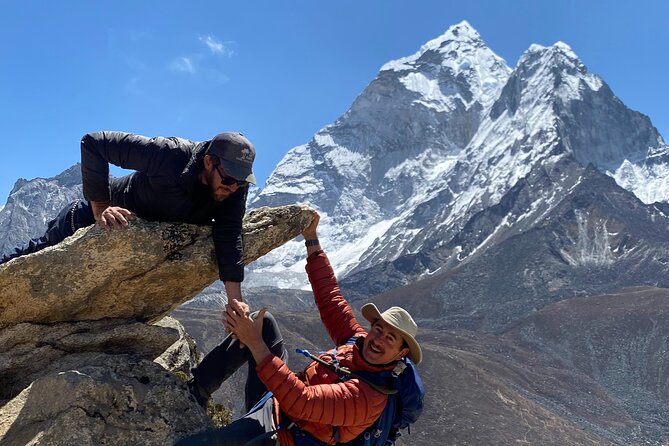
Winding through picturesque landscapes and offering breathtaking views, the trekking routes of Everest View Trek showcase the natural beauty and majesty of the Himalayas.
Trekkers can enjoy the local culture by trying traditional Nepali cuisine and engaging in cultural experiences with the Sherpa people along the way.
The region also provides ample opportunities for wildlife sightings, with chances to spot unique Himalayan species like the musk deer and Himalayan thar.
On top of that, the trek offers stunning photography opportunities at every turn, capturing the rugged terrain, prayer flags fluttering in the wind, and the towering peaks of the Everest region.
These elements combine to create an unforgettable trekking experience that blends nature, culture, and adventure seamlessly.
Necessary Gear and Equipment
As trekkers embark on the Everest View Trek, they must ensure they have the necessary gear and equipment to navigate the challenging terrain and changing weather conditions effectively. Here is a gear checklist to help trekkers prepare for this adventure:
- Sturdy hiking boots with ankle support
- Insulated and waterproof jacket
- Warm layers such as fleece jackets and thermal underwear
- Trekking poles for stability on uneven paths
- Sunglasses and sunscreen to protect against high-altitude sun exposure
For those who prefer not to purchase all their gear, equipment rental options are available in Kathmandu or Lukla before starting the trek. It’s crucial to be well-prepared with the right gear to make the Everest View Trek a safe and enjoyable experience.
Acclimatization and Altitude Sickness
Acclimatization plays a crucial role in preparing trekkers for the challenges of high altitudes and reducing the risk of altitude sickness during the Everest View Trek. To prevent altitude sickness, trekkers must allow their bodies time to adjust gradually to the thinning air.
Acclimatization techniques include ascending slowly, staying hydrated, eating light but high-energy meals, and taking rest days to aid adaptation. Altitude sickness management involves recognizing symptoms such as headaches, nausea, and dizziness. If signs of altitude sickness occur, it’s essential to descend to a lower altitude promptly.
Proper acclimatization not only enhances the trekking experience but also ensures the safety and well-being of trekkers on the Everest View Trek.
Tips for a Successful Trek
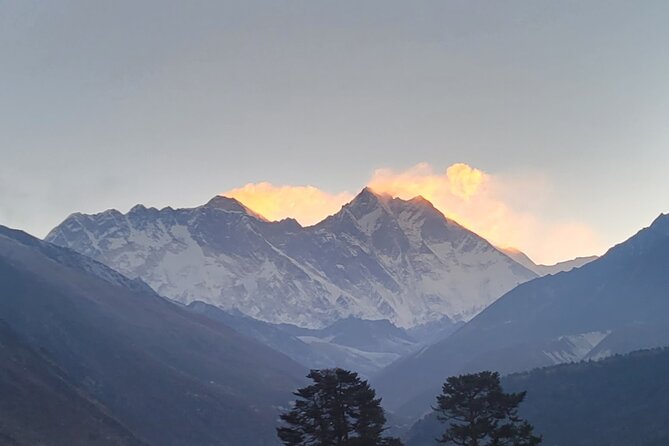
To maximize enjoyment and safety during the Everest View Trek, trekkers should heed valuable tips for a successful journey through the breathtaking Himalayan landscapes.
-
Fitness preparation:
Prior to the trek, focus on cardiovascular exercises and leg strength training to enhance endurance at high altitudes. -
Packing essentials:
Carry layers of clothing, a sturdy backpack, high-quality trekking shoes, and essential personal items like sunscreen and lip balm. -
Hydration tips:
Drink plenty of water throughout the day to combat dehydration and altitude-related symptoms. -
Healthy snacks:
Pack energy-boosting snacks such as nuts, dried fruits, and granola bars to maintain energy levels during the trek. -
Acclimatize properly:
Follow a gradual ascent plan, listen to your body, and take rest days to adjust to the altitude effectively.
Common questions

Are There Any Age Restrictions for Participating in the Everest View Trek?
Age restrictions vary based on trek difficulty. It’s important for participants to check the specific requirements before booking. Trekking often demands moderate physical fitness levels and may not be suitable for certain age groups due to the challenging terrain.
Can I Bring My Own Food and Snacks for the Trek?
Travelers can bring their own food and snacks for the trek. While there might be food options available, it’s recommended to check for any food restrictions. Enjoying familiar snacks can enhance the trekking experience.
Is There Wi-Fi or Cell Phone Service Available Along the Trekking Routes?
In remote locations like trekking routes, connectivity options are limited. Travelers may face communication challenges due to technology limitations. Wi-Fi and cell phone service availability can be scarce or non-existent, so it’s advisable to prepare accordingly.
Are There Any Cultural Customs or Etiquette I Should Be Aware of While Trekking in the Everest Region?
When trekking in the Everest region, it’s important to respect cultural customs and follow trekking etiquette. This includes greeting locals with "Namaste," avoiding public displays of affection, and asking for permission before taking photos.
Are There Any Wildlife Encounters to Be Cautious of During the Trek?
When trekking, travelers should be cautious of wildlife encounters. Following safety precautions is essential to mitigate risks associated with potential animal encounters. Stay informed about the surroundings, respect the wildlife, and adhere to local guidelines for a safe journey.
Last Words
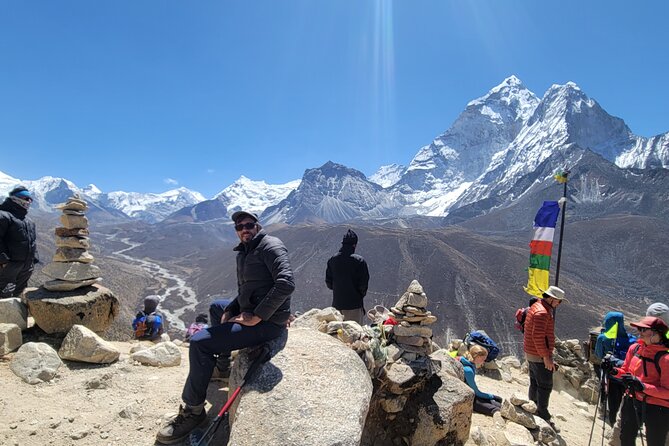
Embark on the Everest View Trek for an intimate and personalized adventure in the majestic Himalayas. With a maximum of 10 travelers per tour, learn about the beauty of Mount Everest and the rich Sherpa culture. Remember to pack necessary gear, acclimate to the altitude, and follow tips for a successful trek.
Create lasting memories and conquer the Everest View Trek for an unforgettable experience in the Khumbu region.